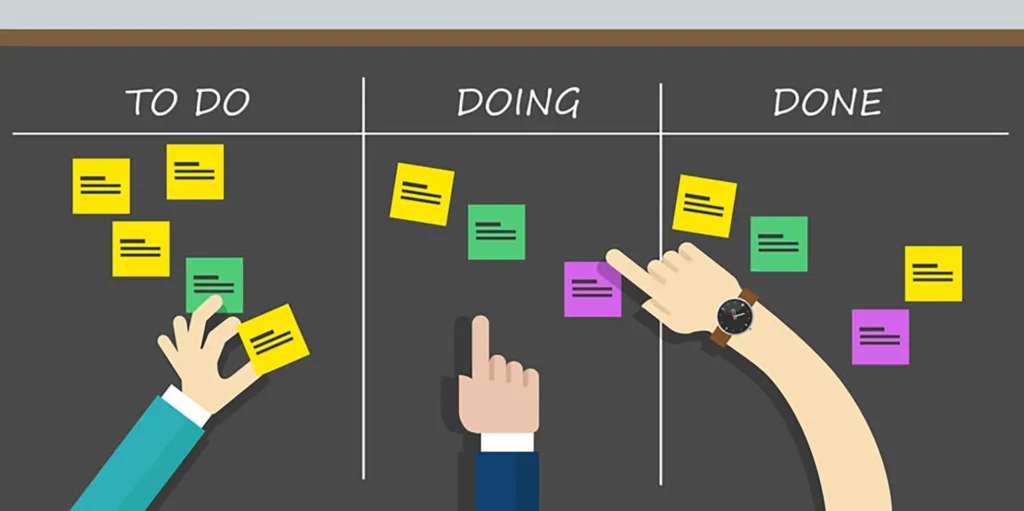Kanban software development offers a visual, flexible, and efficient approach to project management.
You’ve heard it before whether within the tech or traditional industry. Kanban is still making waves in the software development world even when Agile is said to be the go-to, and for good reason. This methodology, rooted in lean manufacturing principles, has become a game-changer for teams seeking efficiency and clarity. Let’s dive into what makes Kanban tick and why it’s worth considering for your next project.
At the heart of Kanban is a simple yet powerful tool: the Kanban board. Picture this: a board divided into columns like “To Do,” “In Progress,” and “Done.” Each task gets its own card, which moves across the board as it progresses. This visual snapshot helps your team spot bottlenecks, track progress, and ensure nothing slips through the cracks.
One of Kanban’s golden rules is to limit work in progress (WIP). By capping the number of tasks in each stage, your team can zero in on completing tasks rather than juggling too many at once. This focus cuts down on context switching, reduces unfinished work, and smooths out your workflow. It’s like giving your team a laser focus on what matters most.
Kanban thrives on continuous delivery. Instead of waiting for big, infrequent releases, it encourages small, incremental changes. As soon as a task hits the “Done” column, it can be deployed to production. This means users get new features and improvements faster, and your team can pivot quickly based on feedback and changing requirements.
Flexibility is where Kanban truly shines. Unlike rigid frameworks, Kanban adapts to your team’s needs. Whether you’re a small startup or a sprawling enterprise, Kanban integrates seamlessly with your existing processes. It’s not about fitting into a mold; it’s about enhancing what you already do well.
Kanban isn’t just a method; it’s a mindset. Regular retrospectives give your team a chance to reflect, identify improvements, and implement changes. This commitment to continuous improvement ensures your processes evolve and get better over time. It’s about always striving for excellence.
Kanban software development offers a visual, flexible, and efficient approach to project management. By visualizing the workflow, limiting work in progress, and promoting continuous delivery and improvement, it helps teams deliver high-quality software that meets user needs. Whether you're a startup or an established enterprise, adopting a Kanban mindset can transform your development process and drive sustained success.
At MPH, we’re using Kanban in managing high-level tasks to give us a better picture of what needs to be done in certain periods of time. This is critical in managing multiple projects specially in unblocking our team with decisions concerning stakeholders.
For more insights on software development methodologies, visit our blog or if you want to learn more about software development practices and how they can benefit your organization, explore our services.


Subscribe to our newsletter to receive the latest updates and promotions from MPH straight to your inbox.